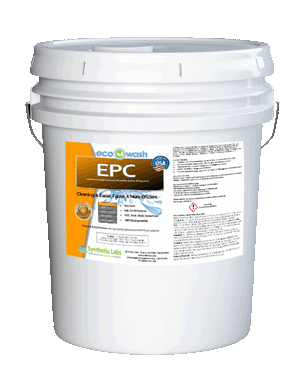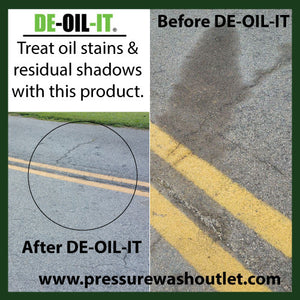Mold
http://www.deadmold.com/
The Potential Negative Effects of Exterior Soft and Power Wash Cleaning on Attic Spaces. A Mold Remediation Company Owner's Perspective.
Lot of you may know me as a Roof Cleaner and the "Air Pump Guy". What you may NOT know is that for 17 years, I have owned an operated a Mold Remediation Company in the far Pacific Northwest in Washington State. And...we specialize in attic spaces.
This post is to make you aware of what can happen when you are power washing the exterior of a building, most specifically, the Soffit and Gable areas. Sit back, grab a drink...this is going to be a big of a long one, but it is information you as a professional exterior cleaning specialist should know.
Attic spaces are ventilated by code. To achieve this, there are two different types of intakes, and two different types of exhausts into the roof structure. The Intakes are primarily what we are going to focus on. Intake of air into an attic will come from either soffit vents...aka "bird blocks"...or through a Gable Vent...the big hole with the grate on the side of the house. There *ARE* some forms of roof based intakes, but they are uncommon and are not the subject of this article.
The first type of intake and the one you are most likely to effect is the Soffit Vent. Soffit vents provide continuous intake of air into the attic space around the perimeter of the house. Soffits can be classified in two different types: Open and Enclosed.
Enclosed Soffits have coverings over the eaves...either with vented panels or with vents installed into solid panels. Above the enclosure will be the underside of the roof sheathing. Spraying water up into this space is not *as* likely to cause an issue as long as it is warm. But doing so when it is cool out and the flow though the attic is minimal is potentially a problem. When you get water and wood together, the results can be mold. I've seen videos with guys spraying large quantities of water up into these spaces.
Open Soffit vents are small holes or slots drilled into the end blocking at the beginning of each truss bay in the attic. Typically, these will have screening or vented cups covering them to keep birds out of the attic. It is these types of soffits which pose the greatest potential for a damage claim for exterior cleaning contractors.
Insulation in attic spaces is increasingly of the "blown in" type. In order for blow in insulation to be installed and not block the exterior vents, soffit Chutes or Baffles are installed between the trusses leading down to the outer soffit blocking. This provides a channel of air against the roof sheathing and allows the insulation contractor to install insulation all the way out to the perimeter of the roof. 99% of these ducts are made from cardboard and they are typically stapled into place.
When large volumes of water at high pressure are introduced into the open soffit vents, there are two potential effects:
First, it can cause the collapse of the soffit chute/baffle. Over time, these baffles absorb moisture from the ambient air and become stiff. A blast of water up into them can be the final straw and can cause them to collapse. When the soffit chutes collapse, the effect is to then block the ventilation in this area, leading to mold growth on the perimeter roof sheathing.
The second effect is direct water onto the insulation. In years past, the majority of attic insulation was the "batt" type. Batt insulation is, by nature, "stiffer" due to it's composition of long layered strands of glass fiber. This is why it is so often used in wall cavities. Because of this nature, it can take a certain degree of moisture onto it without collapse. However, in recent years, blown-in fiberglass is almost universally replacing Batt insulation in attic spaces. This is due to lower installation costs and the ability to put thicker layers, and thus attain higher R value in the attic, meeting modern energy codes. Blow in-insulation has a greater degree of "loft" to it and little structure. But, once wet, the insulation loses this loft and quickly compresses, drastically lowering the R value. When this happens, the effect is likely to be mold on the interior of the house in the ceiling drywall as a cold zone develops.
ONCE THE LOFT IS LOST, IT CANNOT BE REGAINED THROUGH DRYING. This is true with both blown fiberglass and cellulose.
It is for this reason that the Gable vent can also be an issue. When large quantities of water are sprayed into it, that water is going to go directly into the attic and land on the insulation in front of the gable vent, again potentially causing an issue. While the volumes are typically very low, I HAVE seen guys sitting there pumping a whole lot of water into the gable vents. This, for me, is known as "future business".
*Hint* if you have a customer who has had a re-roof done and they have a continuous ridge vent installed with soffit vents...AND you notice they have an open gable vent, this is incorrect! The gable vent must be closed in order for the soffit vents to work correctly. Failure to do so will lead to mold growth around the perimeter as the soffit vents are "shorted" by the gable vent. Advise them to check the attic for mold and close off the gable vent. Any good roofer should know to do this.
If you believe this is not a problem...think again. We've already done an attic space this past season with mold growth around the perimeter where there was water intrusion into the attic space. When we dug further, it turned out to be a power washing company who blasted water into the soffits, collapsed the soffit ducts and the insulation was wet and collapsed down. I am sure they were happy to get the $5000 mold mitigation and insulation replacement bill the customer presented them with.
Suggestions? It is called "SOFT" washing for a reason! Use the smallest volume of water possible to apply and rinse when doing closed soffits. I've seen many videos where the rinse was a deluge and guys were complaining about all the dirt that kept flowing out. This is because the soffits are an intake and dirt accumulates in said intakes. Do not point your tip directly into the soffits, try to use an offset angle to minimize the amount of water going up into the area. This will help minimize intrusion and should cut back on dirty water coming back out.
Avoid blasting the Gable vents from below. This is a direct angle into the attic as the vents are angled down to prevent rain intrusion. Instead, spray them from above and let the cleaning and rinse solution run down them. Again, it is better to use a finer spray than a heavy deluge.
On a large, high dollar project, we often ask to inspect the attic first. This way, if there IS mold up there, we cannot be held responsible (and besides, we are likely to get the remediation project too).
And yes I get it. It is nice to get the project done quickly and time is money. Hitting it with high volumes is faster. But in these particular areas, slowing down may pay dividends and save you from a very expensive claim.
Trust me when I tell you that my per square foot charge for mold mitigation is a LOT more than your per square footage charge for doing an building exterior, so just be aware and be careful.




